Membrane-cytoplasm translocation of annexin A4 is involved in the metastasis of colorectal carcinoma
- PMID: 33761465
- PMCID: PMC8064178
- DOI: 10.18632/aging.202793
Membrane-cytoplasm translocation of annexin A4 is involved in the metastasis of colorectal carcinoma
Abstract
Annexin A4 (ANXA4) is a Ca2+- and phospholipid-binding protein that belongs to the annexin family, which is involved in the development of multiple tumour types via NF-κB signalling. In this study, we verified the high expression and membrane-cytoplasm translocation of ANXA4 in colorectal carcinoma (CRC). Calcium/calmodulin-dependent protein kinase II gamma (CAMK2γ) was found to be important for high ANXA4 expression in CRC, whereas carbonic anhydrase (CA1) promoted ANXA4 aggregation in the cell membrane. An increased Ca2+ concentration attenuated the small ubiquitin-like modifier (SUMO) modification of cytoplasmic ANXA4 and ANXA4 stabilization, and relatively high expression of ANXA4 promoted CRC tumorigenesis and epithelial-mesenchymal transition (EMT).
Keywords: SUMO; annexin A4; calcium/calmodulin-dependent protein kinase II gamma; carbonic anhydrase; membrane-cytoplasm translocation.
Conflict of interest statement
Figures
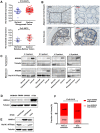
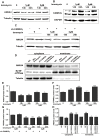
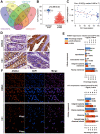

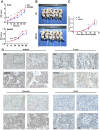
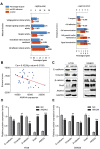
Similar articles
-
The role of annexin A4 in cancer.Front Biosci (Landmark Ed). 2016 Jun 1;21(5):949-57. doi: 10.2741/4432. Front Biosci (Landmark Ed). 2016. PMID: 27100483 Review.
-
Annexin A4 interacts with the NF-kappaB p50 subunit and modulates NF-kappaB transcriptional activity in a Ca2+-dependent manner.Cell Mol Life Sci. 2010 Jul;67(13):2271-81. doi: 10.1007/s00018-010-0331-9. Epub 2010 Mar 18. Cell Mol Life Sci. 2010. PMID: 20237821 Free PMC article.
-
Revealing the molecular mechanism of gastric cancer marker annexin A4 in cancer cell proliferation using exon arrays.PLoS One. 2012;7(9):e44615. doi: 10.1371/journal.pone.0044615. Epub 2012 Sep 7. PLoS One. 2012. PMID: 22970268 Free PMC article.
-
Annexin A4 induces platinum resistance in a chloride-and calcium-dependent manner.Oncotarget. 2014 Sep 15;5(17):7776-87. doi: 10.18632/oncotarget.2306. Oncotarget. 2014. PMID: 25277200 Free PMC article.
-
Annexin A4 and cancer.Clin Chim Acta. 2015 Jul 20;447:72-8. doi: 10.1016/j.cca.2015.05.016. Epub 2015 Jun 3. Clin Chim Acta. 2015. PMID: 26048190 Review.
Cited by
-
Machine learning-driven mast cell gene signatures for prognostic and therapeutic prediction in prostate cancer.Heliyon. 2024 Jul 26;10(15):e35157. doi: 10.1016/j.heliyon.2024.e35157. eCollection 2024 Aug 15. Heliyon. 2024. PMID: 39170129 Free PMC article.
-
Pathobiological functions and clinical implications of annexin dysregulation in human cancers.Front Cell Dev Biol. 2022 Sep 28;10:1009908. doi: 10.3389/fcell.2022.1009908. eCollection 2022. Front Cell Dev Biol. 2022. PMID: 36247003 Free PMC article. Review.
-
SUMOylation at the crossroads of gut health: insights into physiology and pathology.Cell Commun Signal. 2024 Aug 19;22(1):404. doi: 10.1186/s12964-024-01786-5. Cell Commun Signal. 2024. PMID: 39160548 Free PMC article. Review.
-
Role of non-canonical post-translational modifications in gastrointestinal tumors.Cancer Cell Int. 2023 Sep 30;23(1):225. doi: 10.1186/s12935-023-03062-x. Cancer Cell Int. 2023. PMID: 37777749 Free PMC article. Review.
-
Versatile roles of annexin A4 in clear cell renal cell carcinoma: Impact on membrane repair, transcriptional signatures, and composition of the tumor microenvironment.iScience. 2025 Mar 11;28(4):112198. doi: 10.1016/j.isci.2025.112198. eCollection 2025 Apr 18. iScience. 2025. PMID: 40212597 Free PMC article.
References
Publication types
MeSH terms
Substances
LinkOut - more resources
Full Text Sources
Other Literature Sources
Medical
Molecular Biology Databases
Research Materials
Miscellaneous

